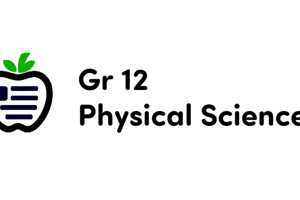Podcast
Questions and Answers
¿Qué aspecto de la química aborda la isomería molecular?
¿Qué aspecto de la química aborda la isomería molecular?
- La clasificación de elementos en la tabla periódica.
- La existencia de compuestos con la misma fórmula molecular pero diferentes estructuras. (correct)
- La formación de enlaces químicos en moléculas.
- La reactividad de los compuestos químicos.
¿En qué se basa la isomería de grupo funcional?
¿En qué se basa la isomería de grupo funcional?
- En la reactividad de los enlaces químicos presentes en una molécula.
- En la cantidad de carbonos presentes en una cadena alquílica.
- En la disposición espacial de los átomos en una molécula.
- En la presencia de los mismos grupos funcionales en diferentes moléculas. (correct)
¿Cuál es la diferencia principal entre un alcohol alifático y un éter en términos de isomería de grupo funcional?
¿Cuál es la diferencia principal entre un alcohol alifático y un éter en términos de isomería de grupo funcional?
- El número total de enlaces covalentes presentes.
- La cantidad de hidrógenos unidos a los carbonos en la molécula.
- La presencia del grupo funcional característico en cada caso. (correct)
- El tipo de átomos presentes en la cadena principal.
¿Qué característica química distingue a una cetona de un aldehído en términos de isomería de grupo funcional?
¿Qué característica química distingue a una cetona de un aldehído en términos de isomería de grupo funcional?
¿Por qué dos isómeros con la misma fórmula molecular pueden tener propiedades químicas diferentes?
¿Por qué dos isómeros con la misma fórmula molecular pueden tener propiedades químicas diferentes?
¿Qué papel desempeñan los grupos funcionales en los compuestos orgánicos?
¿Qué papel desempeñan los grupos funcionales en los compuestos orgánicos?
Flashcards are hidden until you start studying
Study Notes
Molecular Isomerism: Focusing on Functional Group Isomerism
Molecular isomerism is a fascinating aspect of chemistry that deals with the existence of multiple compounds with the same molecular formula but different structures. One of the most intriguing forms of isomerism is functional group isomerism. In this case, the difference between isomers lies in their functional groups, which are distinct groupings of atoms within a molecule that determine the molecule's reactivity and chemical behavior.
One example of functional group isomerism is found in aliphatic alcohols and ethers. While ethanol consists of a hydroxyl group (-OH) attached to a carbon atom, methoxymethane features an ether linkage (C-O-) connecting two methyl groups (-CH₃). Despite having the same molecular formula (C₂H₆O), these two molecules display entirely different functions and properties owing to the presence of different functional groups.
Another set of functional group isomers includes aldehydes and ketones. Propionaldehyde, with the molecular formula C₃H₈O, has an aldehyde functionality (C=O) attached to one hydrogen atom, while propenone, represented by the formula C₃H₈O, possesses a ketone group (C=O) joined to two carbon atoms. Once again, despite sharing the same molecular composition, the functional groups impart unique chemical characteristics to each isomer.
A third instance of functional group isomerism is observed in carboxylic acids and esters. Propionic acid exhibits the carboxylate function (-COOH), while methyl ethanoate represents an ester functionality (C-O-C), where one hydroxyl group (-OH) is replaced with an alkyl group (-CH₃). Again, these isomers have the same molecular formula (C₃H₀₄O₂) but varying functional groups that significantly impact their chemical properties.
The study of functional group isomerism provides valuable insights into the synthesis, reaction mechanisms, and selectivity of organic molecules. By understanding these relationships, chemists can predict the behavior of newly discovered compounds and tailor synthetic strategies accordingly.
Studying That Suits You
Use AI to generate personalized quizzes and flashcards to suit your learning preferences.




